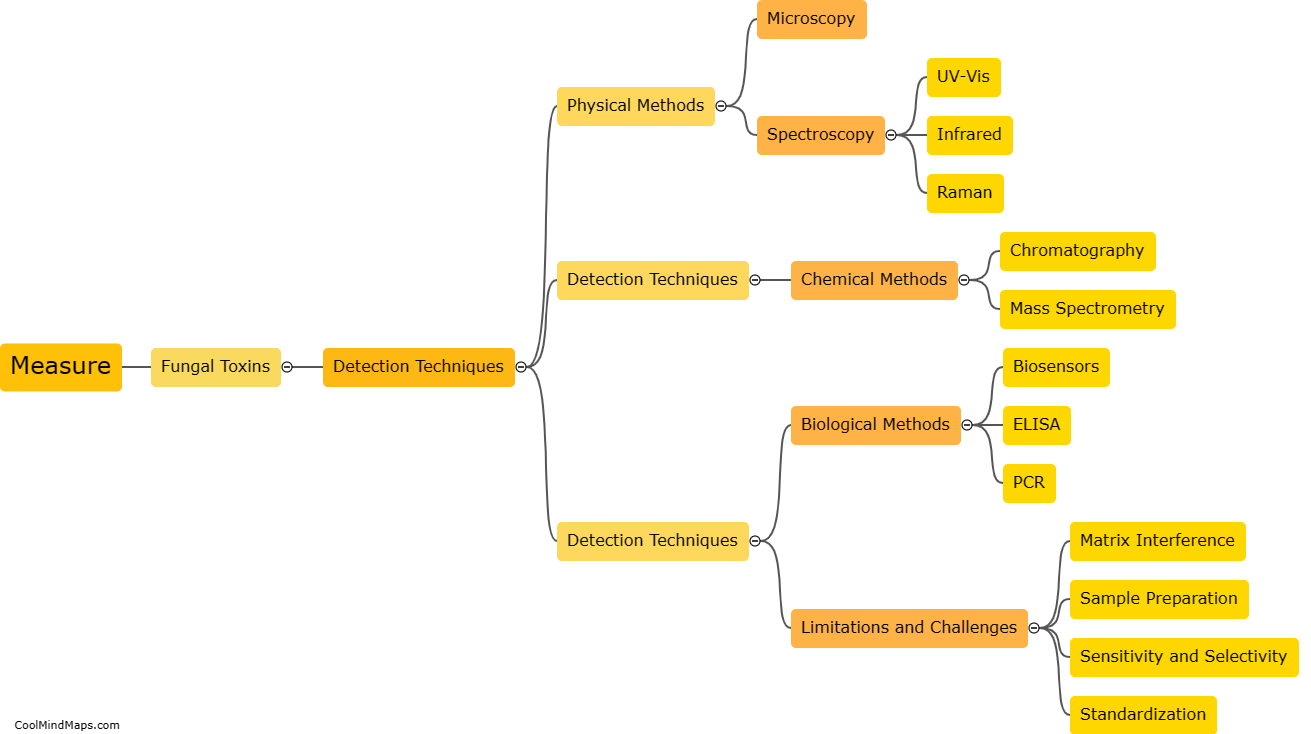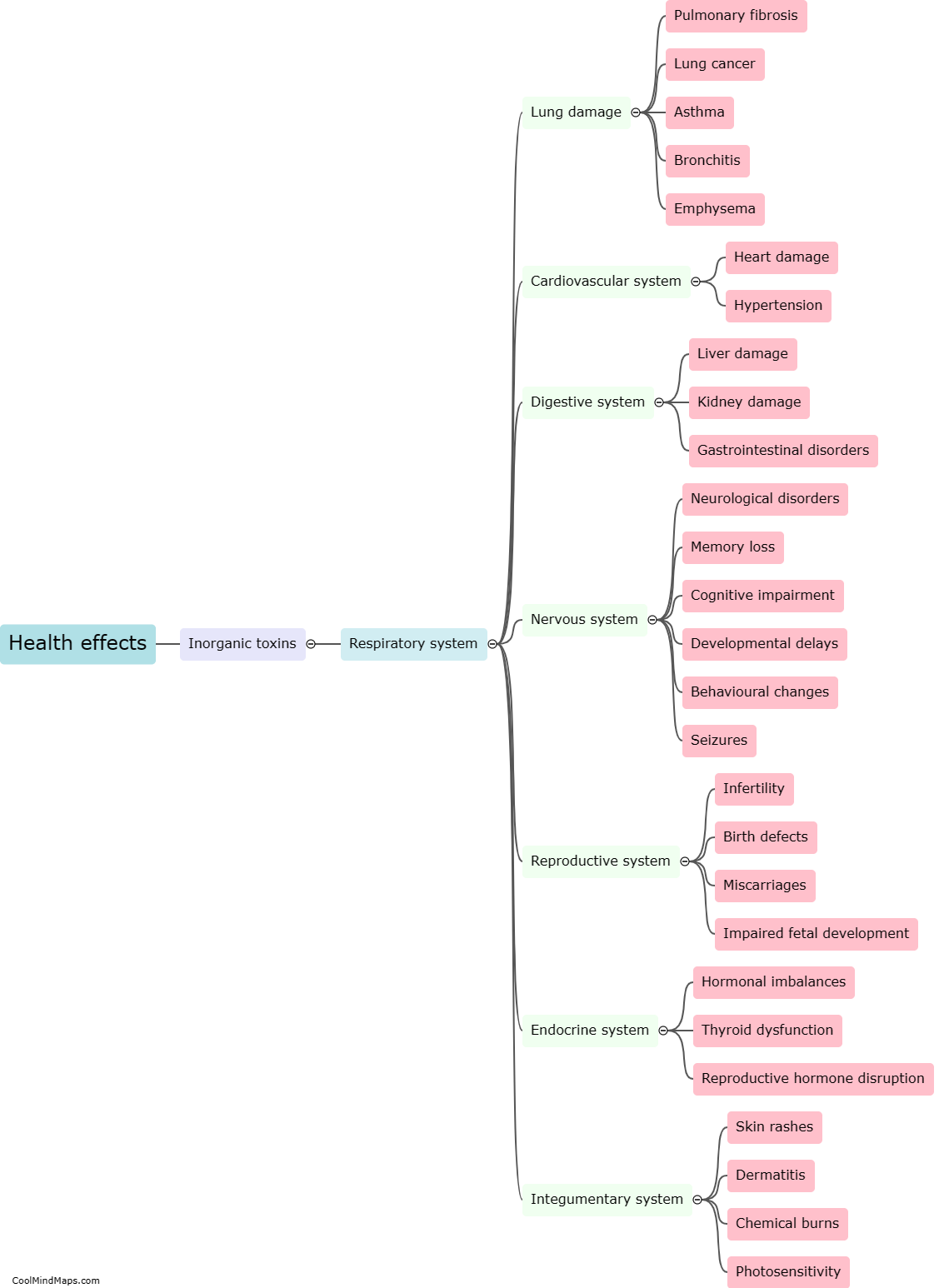What are inorganic toxins?
Inorganic toxins are substances that are derived from non-living sources and have toxic effects on living organisms. Unlike organic toxins, which are produced by living organisms, inorganic toxins are typically created through geological processes or human activities such as industrial pollution. Examples of inorganic toxins include heavy metals like lead, mercury, cadmium, and arsenic, as well as certain non-metals such as chlorine and cyanide. These toxins can enter the environment through various pathways, including air, water, and soil, and can accumulate in organisms, posing serious health risks. Inorganic toxins have been linked to various health problems, including neurological disorders, organ damage, developmental issues, and even cancer. Therefore, it is crucial to identify and control the sources of inorganic toxins to minimize their impact on both the environment and human health.

This mind map was published on 3 December 2023 and has been viewed 104 times.











